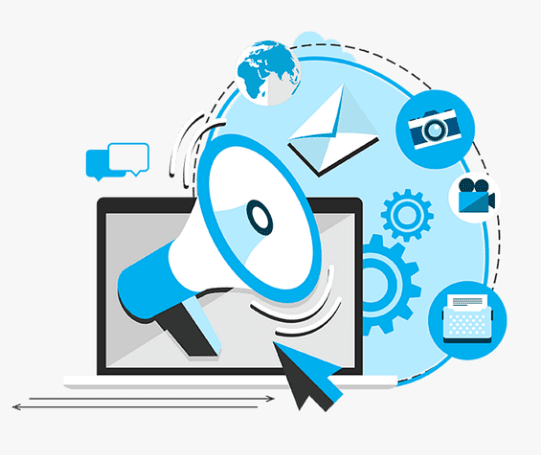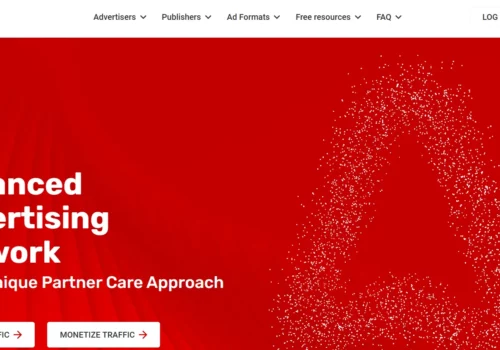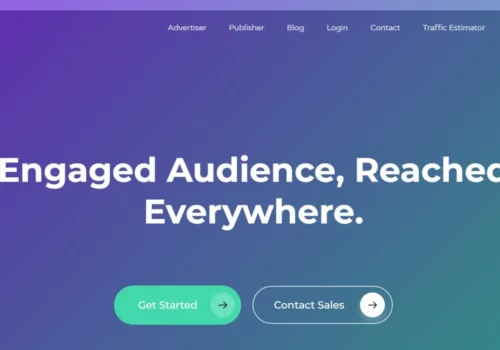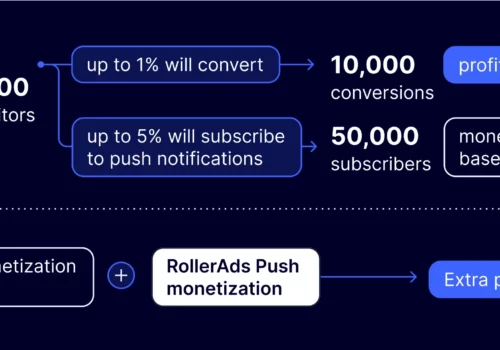Native advertising is a modern and innovative approach to marketing that has gained significant traction in recent years.
Unlike traditional forms of advertising that can be disruptive and interruptive, native advertising seamlessly integrates promotional content into the platform or medium where it appears.
This integration is so smooth that it often feels like a natural part of the user’s experience.
Native Ads: What Is Native Advertising?
Native Advertising is a type of advertising that looks like it belongs where it’s placed. It blends in with the content on a website, social media feed, or other platforms.
Instead of standing out like a traditional ad, native ads match the style of the surrounding content. The idea is to make the ads less annoying and more interesting to people.
These ads often provide useful information and feel like a natural part of the platform they’re on. It’s a way for companies to promote their products or services without being too obvious about it.
What is Native Traffic?

An example of native advertising is paid advertisements that reflect the style, feel, and function of the medium they appear in.
Because it blends seamlessly into content, it doesn’t seem like a traditional advertisement. They appear like a natural part of the content.
The key to native advertising is that it does not disrupt the user experience. By doing this, advertising content is exposed to readers without making a big deal out of it.
In social media feeds and on a website, native ads are often found as recommended content. Social ads are also sometimes classified as native ads.
However, for the sake of avoiding confusion, I’ll focus on native traffic that’s shown on content publishing sites.
The Features of Native Traffic
Native advertising is branded content within an editorial format that educates, informs, and engages its target audience. A similar advertisement is not rejected by readers and appears like a regular article.
The following are some other characteristics of native ads:
1. Integration:
Native ads are seamlessly integrated into the content or user interface of the platform, making them look and feel like a natural part of the user’s experience. This integration helps ads avoid the “intrusive” label associated with traditional ads.
2. Non-disruptive:
Native ads are designed not to disrupt the user’s browsing or viewing experience. They blend in with the surrounding content and don’t interrupt the flow of information.
3. Contextual relevance:
Native ads are typically tailored to match the context of the platform and the interests of the audience. This relevance increases the likelihood of user engagement and conversions.
4. Variety of formats:
Native traffic can encompass various formats, including sponsored articles, promoted social media posts, in-feed ads, and recommended content widgets. These formats are chosen based on the platform and audience preferences.
5. Transparency:
Ethical native advertising includes clear labeling or disclosures to inform users that they are viewing sponsored content. Transparency helps maintain trust between advertisers and users.
6. Engagement-focused:
Native ads aim to provide value and engage users, often through informative or entertaining content rather than hard-selling tactics.
Native traffic: How to Profit from It?
What are the specific ways in which native ads can benefit advertisers and publishers alike? How can native ads earn you money?
Which marketing side you’re on really determines how you approach this. Do you advertise, or do you publish? Advertisers are people who buy native ad traffic from publishers and manage content websites where native ads will appear.
A Publisher’s Guide to Native Ad Profits
You will generate revenue from native ads if you are a publisher. Depending on your agreement, the native advertising provider will pay you a fixed fee or split the advertising earnings with you.
Native Ads: How Advertisers Can Profit
When you purchase native advertising, you are promoting something for which you will make money. Some of these methods include:
1. Owning an e-commerce website or product to promote
When someone purchases something from your store, you can profit from promoting your own products.
2. Getting affiliates to promote offers
Affiliate offers pay associates once an expected user action is performed (subscriptions, downloads, sales, etc.)
3. Arbitrage of traffic
The method of traffic arbitrage entails buying cheap native traffic and redirecting the user to a website with your content and advertisements.
This profit would be calculated by taking the revenue generated by these ads and subtracting the expense of purchasing traffic from native advertising platforms.
Native traffic: How to Get More ROI
It might seem simple to create a native ad, but you have to remember they won’t be profitable if they don’t align with your advertising goals.
The following tips will help you maximize the return on native traffic:
1. Develop a better optimization strategy
Native advertising campaigns can’t just be set up and left to run! Making sure you are not wasting money means monitoring the performance and optimizing accordingly.
2. Test and Improve Ad Creatives
You need creative native ads if you want to win native advertising battles. Test out various kinds of native ads on your native advertising platform (they usually have A/B testing tools). If your current creative isn’t working, you can improve it.
You should not forget, however, that the ads you run must match the offers you make. Even if you get a lot of clicks from catch native ads, if they don’t convert because they are unrelated, then it’s useless.
3. Create Better Marketing Funnels
Marketing funnels should include native advertising campaigns. To make a purchase, a potential customer must go through a marketing funnel.
Your native ad sales funnel must be optimized so that all participants in a transaction (prospects and customers) remain engaged until they complete their transaction.
Keeping them interested is as simple as offering them something valuable along the way.
FAQs
🌟 What are Native Ads?
Native ads are a type of advertising designed to match the look, feel, and function of the media format in which they appear, blending seamlessly with the content.
🎯 How do Native Ads differ from traditional ads?
Unlike traditional ads, native ads don't disrupt the user experience. They are integrated into the content, making them less intrusive and more engaging for the audience.
📈 What are the benefits of using Native Ads?
Native ads offer higher engagement rates, better user experience, and are more effective at building trust with the audience compared to traditional banner ads.
💼 Who should use Native Ads?
Brands and businesses looking to promote their products or services in a non-disruptive, content-focused way should consider using native ads.
💡 Can Native Ads be personalized?
Yes, native ads can be personalized based on user behavior, interests, and demographics, making them more relevant and effective.
💲 Are Native Ads more expensive than traditional ads?
The cost of native ads can vary, but they may be more expensive due to their higher engagement rates and effectiveness.
📝 How do you create effective Native Ads?
Effective native ads should align with the surrounding content, offer value to the audience, and have a clear call-to-action.
📱 Are Native Ads effective on mobile devices?
Native ads are particularly effective on mobile devices as they blend seamlessly with the mobile user experience, often outperforming traditional ads in engagement.
Native Ads on Reddit
Quick Links:
- Brax.io Review
- Infolinks Review
- LastPass Alternatives
- Adsterra Social Bar Revolutionary Digital Ad Format For Advertisers
- AdMaven Review
Conclusion: Native Ads 2024
Traditional forms of online marketing have many disadvantages compared to native advertising. It is more appealing to consumers since it blends in with the publishing website as opposed to other ad formats that annoy them.
In simple terms, native advertising is a type of marketing where ads blend in with the content around them. This makes them less annoying for people and more likely to grab their attention.
However, it’s crucial to be honest and tell people when something is an ad. Being clear about this keeps people’s trust.
When done right, native advertising can benefit both advertisers and people. Advertisers get their message across, and people get useful information.
Additionally, this type of ad generates billions of requests per day! No matter what you offer, there will always be traffic.







